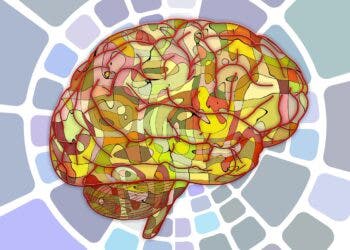Ayahuasca, an herbal tea originally from the Amazon, is known for its potent effects, ranging from hallucinations to near-death experiences to life-transforming voyages. However, what actually goes on in a person’s brain when drinking it has remained mostly unknown. Now, researchers have done advanced brain scans to better understand it.

The active ingredient in ayahuasca is called DMT (dimethyltryptamine) and is found in shrubby flowering plants such as Psychotria viridis, Psychotria carthagenensis and Diplopterys cabrerana. It produces intense altered states of consciousness, but lasts for only minutes instead of hours like LSD or other compounds. It’s been unclear so far how DMT works in the brain.
Researchers at Imperial College London tracked brain activity before, during and after the DMT experience in close detail. They found an extensive impact across the brain, especially in areas that are highly evolved in humans and are instrumental in planning, language, memory, imagination and complex decision-making, the researchers said.
“What we have seen with DMT is that activity in highly evolved areas and systems of the brain that encode especially high-level models becomes highly dysregulated under the drug, and this relates to the intense drug trip,” Chris Timmerman, study author and researcher at the Centre for Psychedelic Research at Imperial College, said in a release.
Looking into DMT
Humans have been using ayahuasca for at least 1,000 years. Back in 2019, a dig in a cave in Bolivia unearthed a leather pouch made from fox snouts. Analysis of the pouch showed traces of DMT, cocaine, coca leaf and other substances. The bag, which dates from AD900 to 1190, was wrapped in a bundle with bone spatulas, snuff tables and a headband.
The name of the brew comes from the Quechua language spoken by some of the indigenous groups in the Andean region. Aya means soul, ancestors or dead people and wasca means vine or rope. It’s still used by many people today, with some recent well-known examples including Prince Harry from the UK and NFL quarterback Aaron Rodgers in the US.
The researchers scanned the brains of a group of 20 volunteers, who were given high doses of DMT by injection. They did two types of scans: functional magnetic resonance imaging (fMRI) and electroencephalography (EEG). The first one measures change in blood flow that happens with brain activity and the second one detects electric signals from the brain.
The psychedelic experience lasted 20 minutes, and at regular intervals, the volunteers rated the subjective intensity of their experience on a scale of one to 10. The scans showed changes in activity within and between brain regions, with increased communication between regions and a noticeable effect on higher-level functions, such as imagination.
“When a volunteer was on DMT there was a marked dysregulation of some of the brain rhythms that would ordinarily be dominant,” Robin Carhart-Harris, another study author, said in a statement. “The brain switched in its mode of functioning to something altogether more anarchic. It will be fascinating to follow up on these insights.”
The study was published in the journal NeuroScience.






